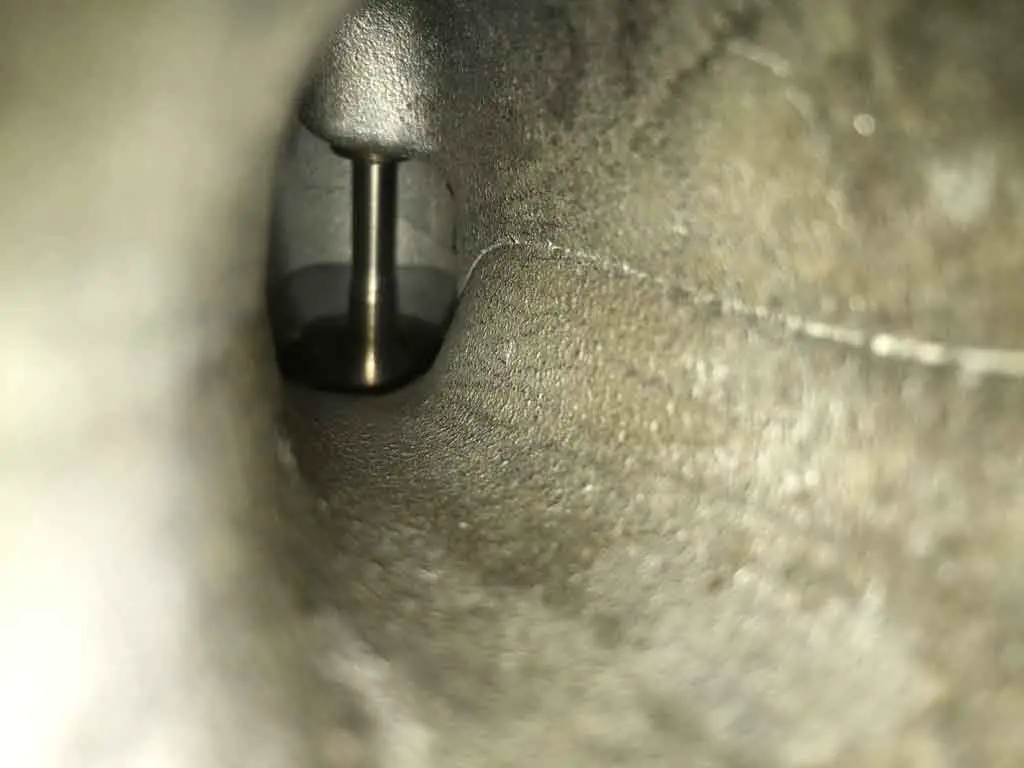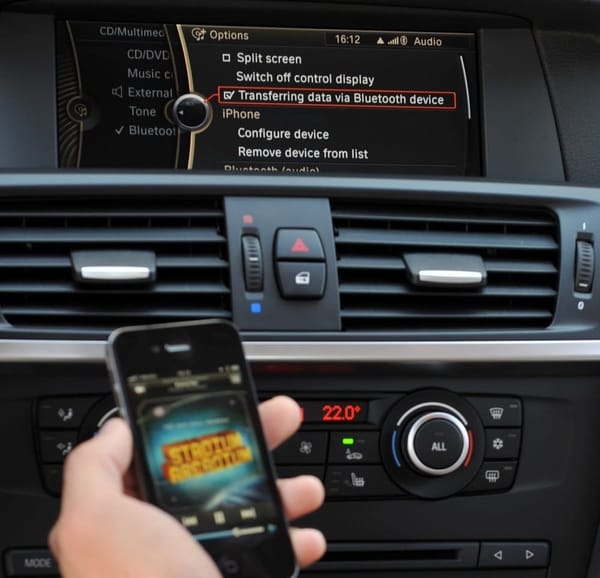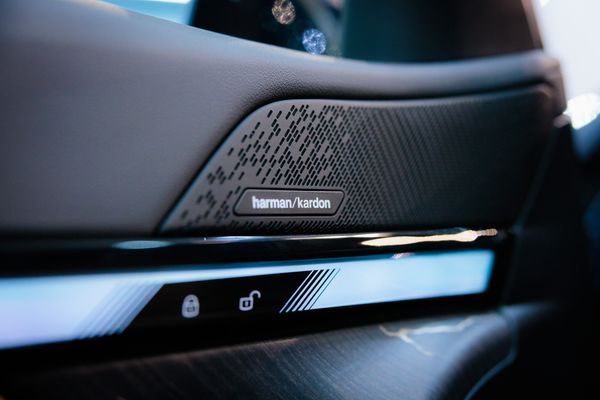The Down and Dirty on Walnut Blasting: Your BMW’s Ultimate Detox

Ah, the life of a BMW owner. Smooth rides, the envy of many, and... carbon buildup? Yep, that's right. No matter how sleek and snazzy your Bavarian beauty is, it's not immune to the pesky carbon deposits that clog up those intake valves. Think of it as that inevitable cholesterol buildup, except for your engine. And just like you'd detox after one too many cheat days, your BMW needs a detox of its own.
Enter: Walnut blasting.
Imagine tiny crushed walnut shells being catapulted at high speeds to exorcise your engine of its carbon demons. Sounds crazy? Maybe. Effective? Absolutely. This ingenious process means you can kiss those carbon deposits goodbye without the hassle of an engine strip-down. The walnut particles are like the Goldilocks of cleaning agents—firm enough to scrub away the grime, yet gentle enough not to rough up your engine components.
And before you reach for that fancy chemical solution, know this: when it comes to cleaning the intake ports of BMW gasoline and diesel engines, walnut blasting takes the cake. But why, oh why, do these carbon deposits build up in the first place? Buckle up, because we're diving deep into the carbon rabbit hole.
The Carbon Culprit: Why and How
Let's paint a picture. You're cruising down the highway, sunroof open, feeling the wind in your hair, when suddenly... BAM! Carbon buildup sneaks in and ruins the party. It's like that unwanted guest who crashes, eats all the snacks, and refuses to leave. But where does this party-crasher come from?
For starters, think of turbochargers' blow-by, exhaust gases through the EGR, and that little mist of oil from the crankcase ventilation—all adding their bit to the carbon cocktail. But this isn't just any carbon buildup. This is the kind that gums up intake ports and valves like there's no tomorrow.
Now, back in the good ol' days—before BMW got all fancy with direct fuel injection—this wasn't a major issue. The system had a built-in cleaning crew: the fuel injectors. Positioned right ahead of the intake valves, these trusty injectors would sprinkle away any carbon attempting to settle in. It was like having a mini cleaning service for your engine.
But then, in the name of progress, BMW switched things up. They moved the injectors directly into the combustion chamber, effectively bypassing the intake ports. Suddenly, our mini cleaners were out of a job, and the intake valves? Left to fend for themselves.
The result? Carbon city.
BMW enthusiasts and mechanics tried every trick in the book. Chemical solutions, magic potions, and rain dances (okay, maybe not the last one)—all in an attempt to tackle the carbon menace. The catch? Minimal success. The only real solution seemed to be a complete removal and disassembly of the cylinder head—a procedure as tedious as it sounds.
However, the folks at BMW aren't ones to back down from a challenge. They quickly recognized the issue and, in a stroke of genius, introduced the walnut blasting solution to their dealer network. And just like that, we had a way to give our engines the deep clean they so desperately needed.
Symptoms of Carbon Overload
Alright, pop quiz time. How do you know when your BMW is screaming out for a carbon detox? Spoiler alert: it doesn't send you a text message or leave a passive-aggressive note on the fridge. But there are signs—oh boy, are there signs.
For the Gasoline Groupies
If you're rocking one of those gasoline engines—think N54, N55, B58, N63 and the like—here's what to watch out for:
- Rough Idle: It's like your car just woke up on the wrong side of the bed and is letting you know about it.
- Misfires: Especially after a cold start or when you're pushing the pedal to the metal.
- Power Loss: Suddenly, your zippy BMW feels more like a lethargic sloth. Not the vibe you signed up for.
- Thirsty Engine: If you find yourself visiting the gas pump a tad too often, carbon might be your culprit.
For the Diesel Diehards
If you’re more of a diesel engine aficionado—N57 and B57 types, I'm looking at you—your symptoms are a bit sneakier:
- The Sneaky Misfire: It's sporadic, it’s after a cold start, and it's as elusive as a cat in a game of hide and seek.
- Meltdown Mode: We're talking about a potential melted intake manifold. And if that teams up with a leaking exhaust gas cooler? You could be inches away from an engine bonfire.
But here's the kicker: these symptoms can be crafty little imitators. A leaking intake valve might throw you off, making you think you're dealing with a failing injector or a small vacuum leak. It's like a mystery novel where everyone's a suspect, and it's up to you (and maybe a trusty mechanic) to figure out who the real villain is. Spoiler: it's usually carbon.
The Walnut Blasting Procedure: It's Nutty
So, you've identified the enemy: carbon buildup. Now, it's time for the counterattack. And in this battle, your weapon of choice? Walnut blasting. But like any great strategy, there's a method to the madness.
Before you jump in, it's essential to understand the basics. First off, depending on the specific BMW engine you're dealing with, you might need to close certain channels, like the blow-by (CCV) ones, particularly for models like the N55. Why? To ensure those walnut fragments don't end up where they shouldn't. Trust me, it's better to be safe than sorry.
Next up, the main event: choosing your walnut-blasting method. Here are the contenders:
Method 1: The Classic Clean
This is your bread-and-butter approach, favored by many repair shops and DIY enthusiasts.
The goal here is to tidy up the intake port and intake valve, especially up to the valve seat area.
The theory goes something like this: once the fresh carbon stops coming to the intake valves, they'll clean themselves during regular engine operation.
It's the lazy person's dream: minimal effort, maximum reward.
BMW themselves give this method a thumbs-up for engines like the N54.
Method 2: The Deep Dive
This method takes Method 1 and kicks it up a notch. After cleaning the intake port, it's all about positioning those intake valves just right (around a 3-4 mm opening gap) and giving the valve seats a good walnut blasting.

But remember, after this deep clean, you'll need to clear out any residue from the combustion chamber.
BMW's ISTA recommends this approach for the N55 engine.
Method 3: The Total Makeover (for the V8s and V12s).
This is the big leagues. If you've got a V8 or V12 engine, like the N63 or N74, BMW suggests a more comprehensive clean.
Once the engine is out, it's all about cleaning everything you can. It's like spring cleaning, but for your engine.

After trying all these methods, my two cents?
Method 1 seems to do the trick just fine.
But hey, it's your car, your choice. Choose your weapon, roll up those sleeves, and let's get that engine sparkling.
Let's Get Blasting
Alright, gearheads, now that we've got our strategy down pat, it's time to roll up our sleeves and get down to business. Walnut blasting may sound fancy, but with the right steps, it's a breeze. Here's your game plan:
1. Prep Work: Out with the Old
Intake Manifold Removal: Think of this as opening the gates to the carbon kingdom. For most four-cylinder and straight-six engines, this is a quick job—under 30 minutes.

But if you're dealing with a Hot Vee V8? Brace yourself for a half-day project.
Closing Blow-by Passages (N55, B58): If you skip this step, you risk walnut granulate playing hide and seek in places it shouldn't.
The ISTA protocol suggests crafting six plates from a feeler gauge tape, but I've seen nifty DIYers whip them up from plastic.


2. Pre-cleaning: Setting the Stage
Before you bring in the big guns (i.e., the walnut shells), give those intake ports some manual love.

A knife, screwdriver, or small wire brush can do wonders.
Once you've scraped off what you can, blow out the debris with compressed air, and hit it with some Scotch-Brite pads for a final polish.
3. The Main Event: Walnut Blasting
Positioning: Plant your extraction adapter firmly over the intake port of the first cylinder. Then, gently introduce the blasting probe to the extractor adapter.

Think of it as a choreographed dance—the two need to work in harmony.
Blasting Time: Connect your compressed air, fire up the vacuum cleaner, and let the magic happen. Move the blasting probe in circular patterns, oscillating in and out. Depending on how much carbon has crashed the party, you're looking at 1-2 minutes per intake port.
Post-Blast Clean-Up: Once the walnut onslaught is over, you'll want to ensure no stragglers remain. Use compressed air to banish any lingering walnut fragments, followed by a spritz of brake cleaner. Then, seal the port with masking tape, ensuring no contaminants waltz back in.
Repeat for Other Cylinders: But remember, always ensure the intake valves of the next cylinder are fully closed before you commence blasting.


4. Reassembly and the Moment of Truth
After you've given all intake ports the walnut treatment, give your engine a good crank—at the crank hub, that is—for a solid two turns. A word of caution: reverse cranking? Not a good idea.
There you have it! The path to a cleaner, happier engine. But remember, like any good story, there's always an epilogue.
Once you've completed the blasting procedure, it's essential to see how your engine reacts to its new, cleaner self. Spoiler: It's usually gratitude in the form of purrs. But sometimes, there might be a hiccup or two. Stay tuned for the post-process...
Carbon's Aftermath: Post-Process
Congratulations! You've ventured into the carbon depths, waged war with walnut shells, and emerged victorious. But like any great saga, there's an aftermath. Here's what to expect and how to handle the post-battle scenes:
Initial Engine Behavior
The First Start: With the cleaning complete, it's time to awaken the beast. Turn that key (or press that button) and listen closely. Some engines purr back to life immediately, grateful for the detox. Others? They might throw a tantrum in the form of misfires or erratic behavior. Don't panic; it's just the engine readjusting to its new, cleaner self.
Quick Fixes for Misfires
Pedal Play: If you detect any misfires or unevenness, give the gas pedal a few quick and brief jabs—think of it as revving without actually revving (keeping it below 2k RPMs). This helps blow out any remaining walnut particles that might be loitering in the combustion chamber.
Memory Erase: Once your engine's running smoothly, it's a good idea to clear any fault memories and reset mixture adaptations. Think of it as giving your engine a fresh start, free from past carbon traumas.
The Waiting Game
If, after all this, the engine still acts up, here's a trick: turn it off and let it sit for about 5-10 minutes. This pause allows the hydraulic valve clearance elements to settle back into their spots, ensuring the valves close completely. Sometimes, patience is the key.
Warm-Up Routine: Should the engine continue to be fussy, let it idle and warm up for about 15-20 minutes. Once it reaches its operating temperature, switch it off and give it another 15-minute break (but no more than an hour). The thinner, warm oil helps the HVA elements adjust more easily.
Final Checks
- Restart the engine, and as before, give the gas pedal those quick pushes. Reset mixture adaptations, clear the fault memory, and if you're dealing with a diesel, reset those injector correction values.
- The true test? A proper drive. It's only after a good run under various conditions—high speeds, heavy loads, and some coasting—that you can be sure your engine's back in top form. For those wielding V8s, remember there's an ISTA service function, aptly named "Start-up after walnut-shell blasting."
In the world of engines, carbon buildup is the villain we all love to hate. But with the power of walnut blasting and a bit of patience, you've got the tools to keep your BMW running as it should: smoothly, powerfully, and carbon-free.
Preventing Carbon's Comeback
So you've given your BMW the ultimate spa treatment, and it's purring like a contented cat. But as any spa aficionado knows, maintenance is key. Let's talk about keeping that carbon at bay.
The Unfortunate Reality
Let's start with some straight talk: due to the design intricacies of the direct-injection system, complete prevention of carbon buildup is a tall order. It's like trying to stop chocolate from melting in the sun—it's just the nature of the beast. But while we can't eliminate it, we can certainly mitigate it.
Potential Carbon Combat Tactics
EGR Valve: One way to reduce carbon deposits? Tinker with the EGR valve. By removing or disabling it, you can achieve cleaner combustion, especially in gas-powered BMWs.
Oil Catch Can: Installing an oil catch can might offer some respite. While it's not a silver bullet, it's a step in the right direction.
Fuel Choices: Sometimes, it's as simple as what you feed your car. Premium fuels, like Shell V-Power, can promote cleaner combustion. But remember, it's either premium fuel OR additives. Combining both is like mixing stripes with polka dots—just don't.
Special Mention: Diesel Engines
For diesel devotees, the carbon story has its unique twists. A significant chunk of carbon deposits in diesel engines comes from recirculated exhaust gases. While gas-powered Bimmers might not benefit massively from disabling the EGR, doing so on a BMW diesel engine can make a world of difference. In fact, there's a nifty ISTA service function allowing you to ramp up the EGR fresh air rate for engines like M47, M57, N47, and N57. A heads-up, though: this might be limited to older software versions, probably up to around 2018.
The Final Word
No matter the preventive steps you take, remember this: regular check-ups and maintenance are crucial. Think of it as regular visits to the dentist, but for your car.
And should carbon ever dare to rear its head again?
Well, you've got walnut blasting in your arsenal. Carbon doesn't stand a chance.
In the epic battle against carbon buildup, knowledge, vigilance, and a handful of walnuts are all you need.
Drive on, BMW warriors, drive on.





